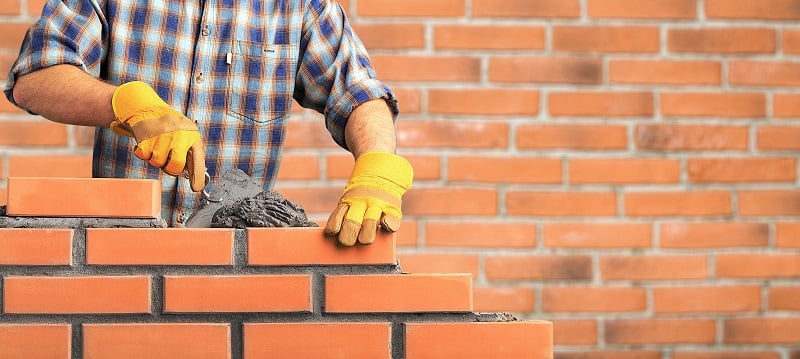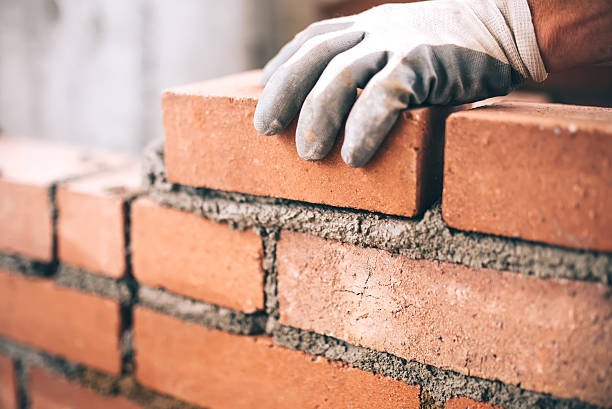Opening the Tricks of Sustainable Stonework Building Practices for Eco-Friendly Buildings
Amongst the myriad techniques to eco-friendly building, lasting masonry building and construction stands out as a tried and true and durable technique that holds a riches of untapped possibility. From the selection of materials to ingenious building and construction strategies, the secrets to accomplishing sustainability within stonework building and construction are multifaceted and interesting.
Benefits of Sustainable Masonry Building And Construction
Accepting sustainable masonry building and construction methods not only reduces ecological influence however also offers long-term financial benefits to contractors and communities. By making use of products like recycled bricks, obstructs, and stones, builders can significantly lower the carbon footprint of their tasks while advertising resource performance. Furthermore, lasting stonework construction strategies, such as appropriate insulation and thermal mass homes, can enhance power efficiency within structures, resulting in lowered functional expenses over time.
In addition, the toughness and resilience of stonework frameworks add to long-term economic advantages. Buildings built using sustainable stonework practices frequently need less repair and maintenance, translating to cost financial savings for contractors and residential or commercial property proprietors. The long life of masonry products additionally ensures that structures continue to be stable and protected, lowering the need for regular renovations or replacements.
Eco-Friendly Masonry Products
Making use of environment-friendly stonework products is a pivotal step towards improving the sustainability of building and construction practices and minimizing environmental effect while making best use of long-term economic benefits. Sustainable masonry materials are sourced, created, and used in a way that lowers total ecological influence. Materials such as recycled bricks, reclaimed stone, and sustainable concrete blocks are becoming increasingly popular choices for eco-conscious building contractors. Recycled bricks, for example, not only divert waste from garbage dumps but also require less power to generate contrasted to brand-new bricks. Recovered stone offers a distinct aesthetic allure while lowering the demand for brand-new quarrying. Sustainable concrete blocks incorporate recycled accumulations and might include enhanced insulation residential properties, adding to energy effectiveness in buildings.
Additionally, all-natural materials like adobe, rammed earth, and straw bales provide excellent thermal mass homes, minimizing the requirement for home heating and cooling down power. These products are typically locally readily available, advertising local economic situations and minimizing transportation-related carbon emissions. By choosing eco-friendly stonework materials, building tasks can substantially reduce their environmental impact and add to the development of much healthier, more sustainable constructed environments.
Energy-Efficient Masonry Methods
Power efficiency plays a vital role in enhancing the sustainability of stonework building and construction practices. By executing energy-efficient stonework strategies, builders can considerably minimize the total power consumption of a building, resulting in reduced functional prices and a smaller sized ecological impact. One key energy-efficient masonry method is making use of thermal mass, which entails incorporating dense materials like concrete or brick into the building's structure to take in and keep warm. This aids control interior temperature levels, reducing the need for mechanical heating and cooling down systems.

Innovations in Lasting Masonry
Current advancements in sustainable stonework practices have actually produced ingenious strategies that are reshaping the building sector. One such advancement is the growth of self-healing concrete, which uses microorganisms embedded within the concrete to recover splits autonomously. This breakthrough not only decreases upkeep expenses yet also enhances the durability of masonry frameworks, adding to their sustainability.
An additional notable advancement is the usage of recycled aggregates in masonry building - masonry contractor. By including products such as crushed decorative concrete topping ceramic waste or recycled glass into concrete mixes, home builders can lower the environmental impact of building jobs while preserving architectural honesty. This technique not only diverts waste from landfills but likewise saves natural deposits, making it a crucial innovation in lasting stonework building and construction
Additionally, the integration of site web digital design tools, such as Building Information Modeling (BIM), is revolutionizing the way masonry structures are intended and created. BIM permits even more specific estimations, lowered product wastefulness, and enhanced energy effectiveness, ultimately resulting in more lasting structure techniques. These advancements collectively represent a promising future for sustainable stonework building in the age of environment-friendly buildings.
Future Trends in Masonry Sustainability
With the cutting-edge strides made in lasting masonry practices, the future fads in stonework sustainability are poised to further change the building and construction market. One of the vital patterns shaping the future of stonework sustainability is the boosted integration of technology. Innovations such as Building Information Modeling (BIM) and digital truth simulations are being utilized to maximize masonry building and construction procedures, resulting in reduced product waste and improved power performance in buildings.
In addition, the advancement of novel lasting materials is established to play a considerable role in improving the eco-friendliness of masonry building. masonry contractor. Innovations like self-healing concrete, recycled accumulations, and bio-based binders are acquiring grip for their capability to decrease environmental influence while maintaining architectural honesty

Verdict
In final thought, sustainable stonework building and construction methods provide various benefits for green structures. masonry contractor. Advancements in sustainable masonry are continually being established to even more enhance the ecological efficiency of buildings.